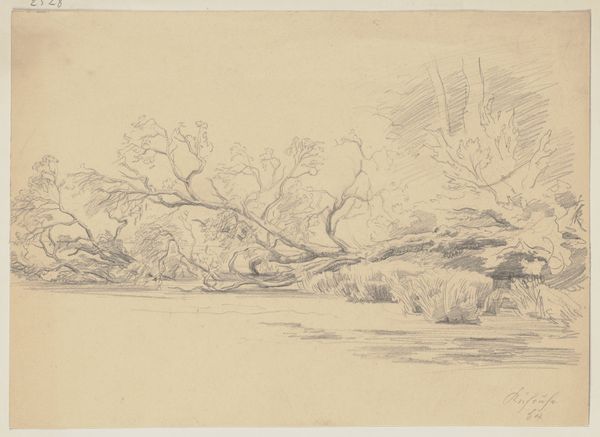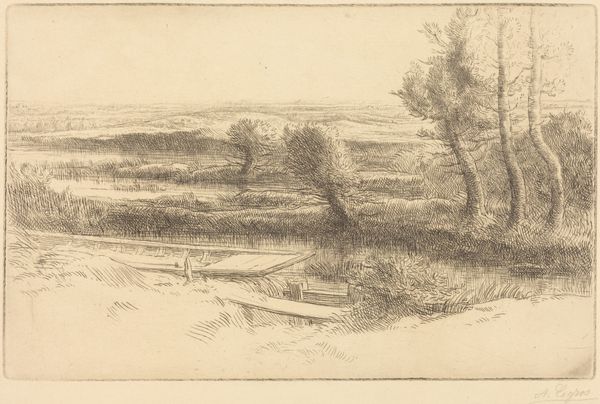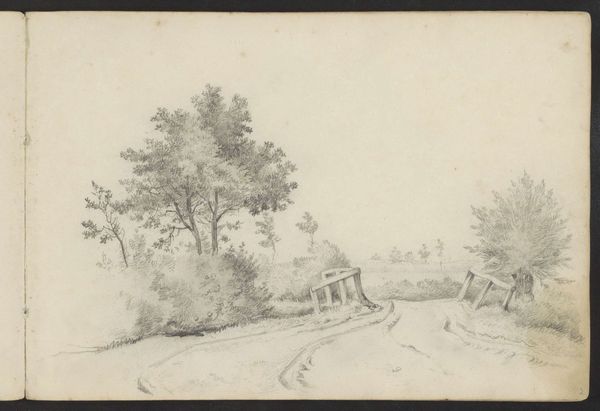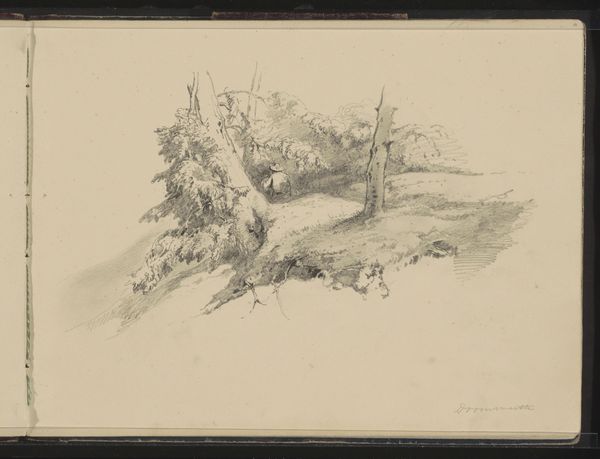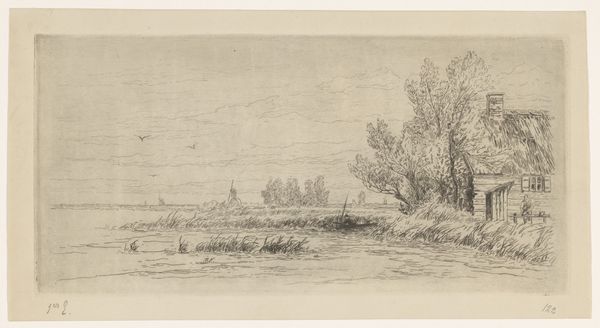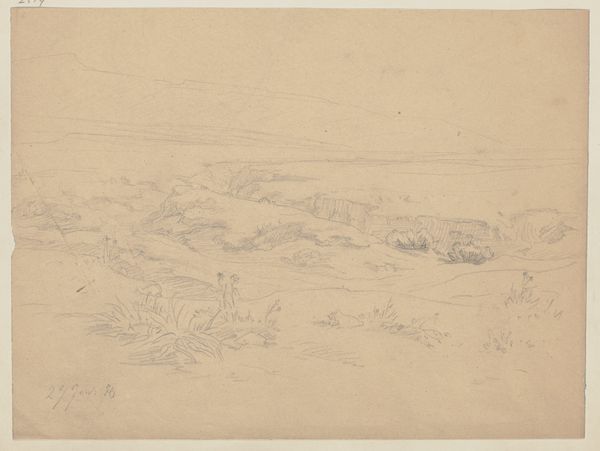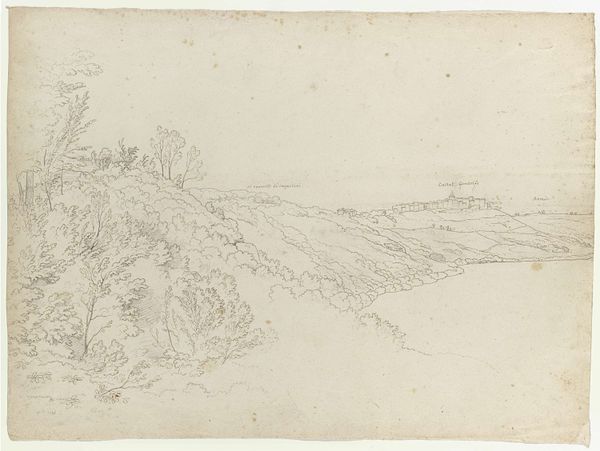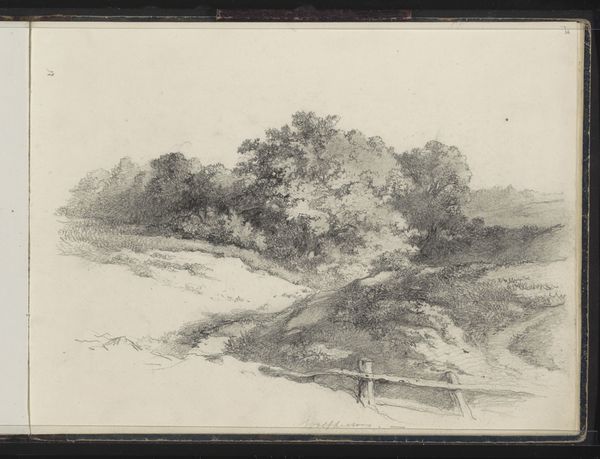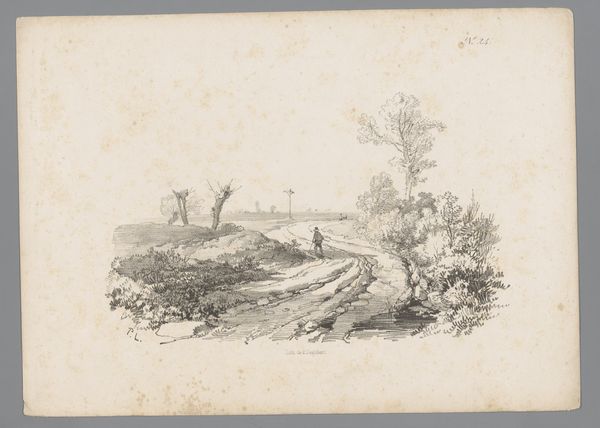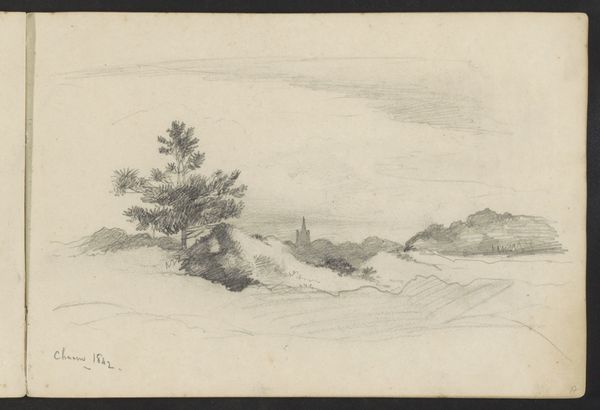
Copyright: Rijks Museum: Open Domain
Editor: This is "Path in a Heath Landscape" by Johannes Tavenraat, made sometime between 1842 and 1868. It's a pencil drawing at the Rijksmuseum. It feels so quiet and empty, almost desolate. How do you interpret this work? Curator: This seemingly simple landscape drawing allows us to consider a network of ideas about nature, nationalism, and identity in 19th-century Netherlands. We need to consider how Tavenraat's choice to depict this particular landscape – the heath – plays into ideas of Dutch identity at this time. Does this resonate with Romanticism’s broader concerns with the individual and the sublime, but filtered through a very specific cultural lens? Editor: That's interesting. I hadn't thought about the heath itself as having a cultural meaning. Curator: Exactly! Heaths were often associated with rural poverty and were seen as "unproductive" land. By depicting this, Tavenraat is potentially making a statement about the value of the common person and the beauty of the natural landscape. Do you notice the subdued light and the muted tones of the pencil? It is perhaps, reflecting on the subtle, quiet strength of the Dutch people and landscape. Editor: Now that you mention it, the path could symbolize the journey of the common person? Curator: It very well could! And we must remember these works were largely made, seen and shared among men. These gendered elements can be teased out when observing how these images participated in the narrative of the time period. Perhaps it suggests strength, stoicism, quiet perseverance as masculine virtues enacted in the context of nation building. The choice of medium too…pencil… inexpensive, available to all and used as a tool to map the land for military purposes is brought in closer to a more domestic space like that of a sketchbook page, a subtle resistance embedded in a simple scene. Editor: I never considered those connections! I will never see landscapes in the same way again. Thank you! Curator: Indeed! By contextualizing art within broader societal frameworks, such as gender and class, we reveal deeper, meaningful ideas and interpretations that shed light on a work.
Comments
No comments
Be the first to comment and join the conversation on the ultimate creative platform.
